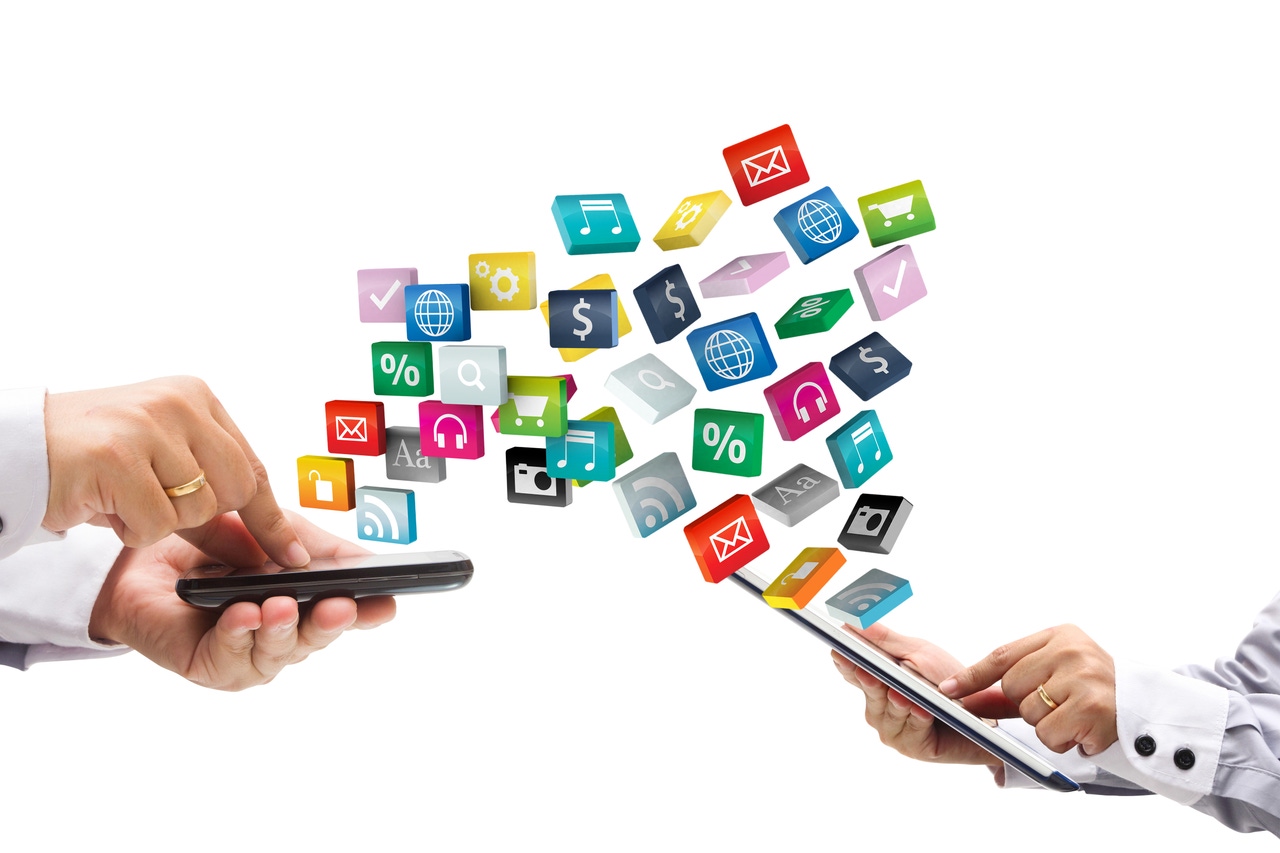The future of communications is embedded within appsThe future of communications is embedded within apps
Communications are on the precipice of change. And it’s not the change to all-cellular communications that you might expect. Nor is it one giant federated network of different over-the-top apps like Viber or WhatsApp.
February 10, 2015

Telecoms.com periodically invites expert third-party contributors to submit analysis on a key topic affecting the telco industry. In this article Jeff Lawson, CEO of Twilio explains how he sees the future of communications shaping out, and what kind of a role apps will play in this changing landscape.
Communications are on the precipice of change. And it’s not the change to all-cellular communications that you might expect. Nor is it one giant federated network of different over-the-top apps like Viber or WhatsApp.
Instead, communication is fragmenting into a series of hyper-focused communities, where people communicate within the framework and in the context of what they are working on. Want to talk to a contact on a particular social network? Do it within that app. Want to talk to the owner of a house-sharing rental you’re interested in? Have the communication within that app’s ecosystem.
In the very near future, every app will have their own communication capabilities built into them. Every. Single. App.
The changing world of communications
2014 was a record year for apps, seeing a 76% year-on-year growth in usage. We are living in a mobile-first, app-led economy which is only getting stronger thanks to the impact of growing interest in casual gaming, like Monument Valley, and the rise of sharing economy apps, like Uber and Hailo.
As a result we are seeing the broadening of communications within apps, beyond the scope of mobile messaging platforms like Skype and WhatsApp. Just look at platforms such as LINE and WeChat, which last year grew through a variety of functionalities beyond gaming and sticker packs, such as taxi-hailing, mobile payments and streaming media.
What is driving this shift of in-app communications? Why would people want to have many different places to communicate, rather than one?
The answer lies in content and context. By communicating in a specialized environment that is integrated with the product or service customers are using, they gain a much richer, more contextual experience that fundamentally changes the efficiency of the interaction. For app developers and customer-service-focused companies, this level of communication builds loyalty with customers, raises conversion rates and lowers overall costs.
Imagine the perfect world of customer experience
Here is how contextual communications should and can work, hypothetically speaking: you are in a minor car accident. You bring out your phone and load your car insurance app. From in the app, you click ‘Call.’ As your call starts from within the app, your insurance agency knows to route the call as a priority, since the location from your phone shows you are calling from the highway. Because your phone language is set to Spanish, you are given Spanish IVR announcements and routed to a Spanish-speaking agent. As you wait for the call to be answered, you can see all your insurance details, such as coverage dates and deductibles.
The agent greets you by name and checks that you’re okay. “Before we continue, I’d like to verify your identity. Please put your finger on your iPhone’s Touch ID sensor.” Having verified that the owner of the phone is calling, you’re invited to share a photo of the crash scene. From within the same app, you take a photo of the crash scene and share it with the agent. The agent asks you to indicate the direction of motion at impact, and you doodle an arrow over the picture. “We can get the claim taken care of for you,” says the agent. “I can see your location. A tow truck will be with you shortly. We’ll send a courtesy car so you can get on your way quickly. Which of the two cars you see on your screen would you like?” Your screen shows a Toyota sedan and a Nissan SUV. You flick through pictures and select the Nissan.
When the call is finished, you can see the full record of your communication and interaction within your app history or have it texted or emailed to you. The next time you call your insurance agency, you can pick up the conversation where you left off — no matter which agent answers — because all of that interaction was automatically archived to the agency’s customer-relationship management (CRM) system.
Imagine viewing your billing statement online when you see a discrepancy on a transaction. Rather than picking up the phone and going through the process of finding the right person to help you at the bank, imagine simply clicking on a link within the app to be connected to your bank’s customer service representative. When you get on the line, they know exactly who you are, have verified your information and can immediately begin addressing your concern. You’re saved from the frustration of calling a generic customer service line. Access from within the app helps to speed up customer service and improve performance – while making the customer’s life easier.
From hypothetical to reality
None of the capabilities described are possible when dialing in from outside the app ecosystem. These capabilities serve a dual purpose of both improving customer experience and lowering costs by making the customer service interaction more efficient and effective.
As an example, take Porch.com. Porch is building the home network, a home services marketplace that is free for homeowners and home professionals. With over 2.8 million professionals and over 120 million projects, Porch enables homeowners to make smart home improvement decisions by giving them the information they need to find the right professionals, get inspiration, and manage their home. Porch recently released their first mobile offering, the Porch App, to provide homeowners a seamless and innovative way to connect with professionals their neighbors have used and loved. To achieve this goal, Porch have included two interesting features which are both examples of embedding communications in-app in order to create a more contextual experience: Porch Concierge and Pro Dial.
With a single tap, Concierge launches an in-app interactive audio call with a Porch representative who provides consultation for homeowners so they can determine which pro type to use and then directly connect them with a home professional who has done similar work in their neighborhood. With Pro Dial, customers who know what type of pro they need can simply tap the Pro Dial button and get connected to the right professional in less than 60 seconds.
With both Concierge and Pro Dial, because the communication stays within app, while they wait the user can browse through relevant design concepts. Once connected each person can see the picture and name of who they are talking to immediately. These capabilities help make the connection between homeowners and professional more seamless and without some of the friction that exists today (and this really is just the tip of the iceberg for what can be done).
What impact will contextual communications have on the operators
What Porch and our imaginary perfect scenario above shows us is that businesses are being driven by new school of communications thanks to empowered customers that expect any desired information, service or product to be available on any appropriate device, in context, at their moment of need. Customers are putting access to companies in their pockets and expect to engage them as long as they can yield the right content, at just the right time, in the perfect context, with the highest possible convenience.
This step change is challenging telecom operators. The 150-year old telecoms industry with a legacy of hardware and not equipped to deal with such a software-led communications. Already being hurt by over-the-top messaging platforms that eat away at revenue carried over networks, the impact of in-app interactive audio calls and messaging as well as content delivery will only hit them harder.
 Jeff Lawson is a serial entrepreneur with more than 15 years of experience building products and businesses. He actually started his first company in his teens. Before co-founding Twilio, he founded NineStar, Stubhub.com and Versity. He was also one of the original product managers for Amazon Web Services. Jeff has built and been involved with quite a number of businesses, with Twilio set to be the biggest one yet.
Jeff Lawson is a serial entrepreneur with more than 15 years of experience building products and businesses. He actually started his first company in his teens. Before co-founding Twilio, he founded NineStar, Stubhub.com and Versity. He was also one of the original product managers for Amazon Web Services. Jeff has built and been involved with quite a number of businesses, with Twilio set to be the biggest one yet.
Read more about:
DiscussionAbout the Author
You May Also Like










.png?width=300&auto=webp&quality=80&disable=upscale)


_1.jpg?width=300&auto=webp&quality=80&disable=upscale)